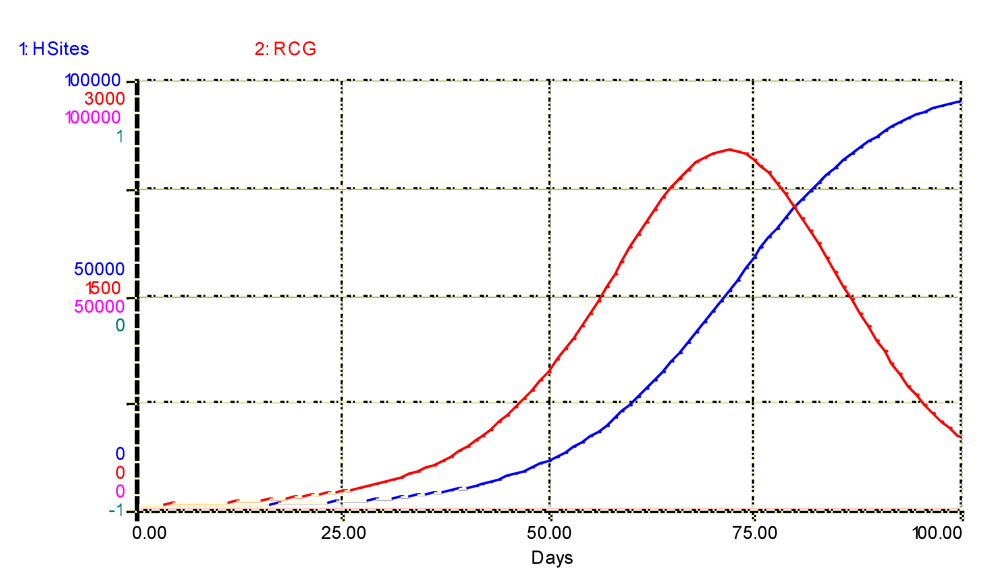
Comparison of Epidemics
For better comparison of epidemics of the same disease at different times, different locations, or under different management practices or to compare different diseases, the patterns obtained for disease–progress curves and disease–gradient curves are frequently transformed mathematically into straight lines. The slopes of these lines can then be used to calculate epidemic rates.
In monocyclic diseases, the amount of inoculum does not increase significantly during the season. In such diseases, therefore, the rate of disease increase is affected only by the inherent ability of the pathogen to induce disease and by the ability of the environmental factors and cultural practices to influence host resistance and the virulence of the pathogen.
In contrast, the initial inoculum for diseases caused by polycyclic pathogens, although extremely important, has relatively less importance than the number of infection cycles in the final disease outcome. Pathogens that have many infection cycles also have numerous opportunities to interact with the host. Therefore, the same factors mentioned earlier, namely the inherent ability of the pathogen to induce disease, environmental factors, host resistance, and cultural practices, have an opportunity to influence the dispersal, penetration, multiplication, size of lesion, rate of lesion formation, and rate and amount of sporulation, but they can do that not once but several times during the same growth season. The continuous or, sometimes, intermittent increase of the amount of inoculum and disease may result in highly variable infection rates for individual short-term intervals during the growth season, and quite variable epidemic rates for the entire season.
The epidemic rate for polycyclic diseases is usually calculated per day or per week rather than per year, which is the way it is calculated for monocyclic diseases. In general, the epidemic rate (r) for polycyclic diseases is much greater than the rate of epidemic increase (rm) for monocyclic diseases. For example, the rm for Verticillium wilt of cotton is 0.02 units per day and is 1.60 units per year for Phymatotrichum root rot of cotton.
In contrast, the epidemic rate r for potato late blight is 0.3–0.5 units per day, is 0.3–0.6 units per day for wheat stem rust and 0.15 units per day for cucumber mosaic virus. In addition to the epidemics caused by monocyclic and polycyclic pathogens, there are also polyetic epidemics. Pathogens causing polyetic epidemics are present for one year or more in the infected plant before they produce effective inoculum, e.g., some fungal wilts and viral and mollicute diseases of trees. Because of the perennial nature of their hosts, polyetic diseases behave basically as polycyclic diseases with a lower r. This happens because there are as many diseased trees and almost as much inoculum at the beginning of a year as at the end of the previous one, and both increase over the years, causing slower but just as severe epidemics.
Some well-known polyetic epidemics are chestnut blight (r = 0.3–1.2 units per year) and elm yellows (phytoplasma) (0.6 units per year).


